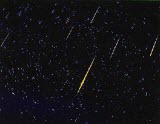 Considered now to be the most prolific annual meteor shower, the Geminids are active from December 7-16, reaching a peak this year in the early morning hours of December 14th. Unlike other showers, Geminids stem from debris shed by a small asteroid called Phaethon, which passes within 10 million miles of the Sun. Over time material has been deposited over great swathes of the inner solar system. However it is only within the last 100 years that Geminid activity has increased to the levels witnessed today, a situation that will only last for a further 100 years!
Considered now to be the most prolific annual meteor shower, the Geminids are active from December 7-16, reaching a peak this year in the early morning hours of December 14th. Unlike other showers, Geminids stem from debris shed by a small asteroid called Phaethon, which passes within 10 million miles of the Sun. Over time material has been deposited over great swathes of the inner solar system. However it is only within the last 100 years that Geminid activity has increased to the levels witnessed today, a situation that will only last for a further 100 years!
Typical Geminids are about the size of large coffee granules that penetrate deep into Earth's atmosphere before 'burning up' - (two processes; known as ablation and ionisation). Brighter Geminids regularly produce long luminous trails, sometimes green or orange in hue. The shower radiant lies close to Castor, readily visible in the east by 6pm.
Under ideal conditions the Zenith Hourly Rate (ZHR) may reach 120 meteors, however observed rates are always lower and moonlight will hamper viewing this year. Best to observe after 5am on the 14th when rates per hour may be around the 30 mark. Concentrate on regions of the sky a couple of hand spans away from the radiant of the meteor shower, not around the radiant position itself.
The Ursids (radiant close to Great Bear) are active between Dec 17-25th with maximum occurring on Dec 22/23. Rates of 8-12 are normal, but occasionally Ursids produce strong outbursts. Best observe before moonrise (around 9pm) on the 22nd.
- Log in to post comments

